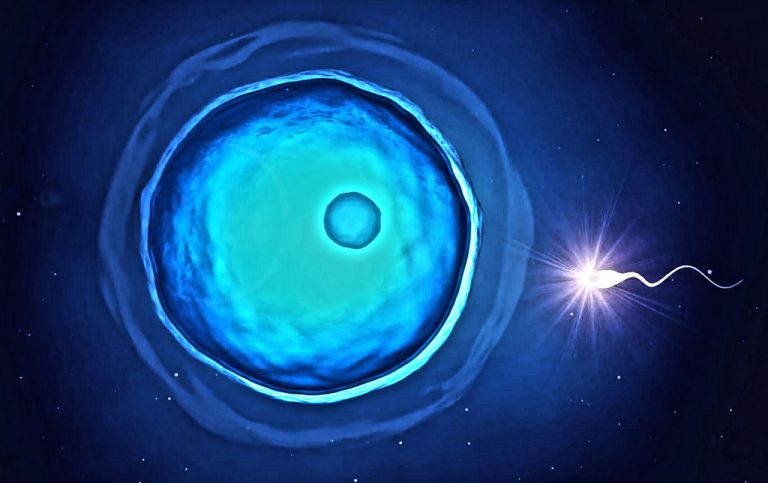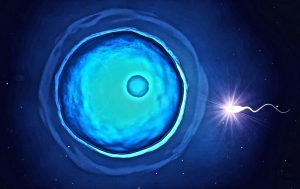
Soon, a somatic cell could be converted into human sex cells. [Image credit: Karl-Ludwig Poggemann, Flicker.com, CC by 2.0]
Table of Contents
In essence, our body consists of two major types of cells – one group involved directly in reproducing sexually (called sex cells) and another group that are not (called somatic cells). In particular, the female sex cell is referred to as the ovum (also called egg cell) whereas the male sex cell, the sperm cell. The somatic cells, in turn, are the cells in the body that have varying functions, such as nourishing the sex cells as well as keeping the body thriving and functional.
Origin of sex cells
Our body produces sex cells through the process called gametogenesis. The process is essentially a step-by-step process of meiosis. Oogenesis (i.e. gametogenesis in females) takes place in the ovaries to produce ova or egg cells. In brevity, the oogonium (the female primordial germ cell) undergoes meiosis to produce four haploid egg cells. Conversely, spermatogenesis (i.e. gametogenesis in males) occurs in the testes to yield sperm cells. Quintessentially, the spermatogonium (the male primordial germ cell) will go through meiosis to give rise to four haploid sperm cells.
Sex cells vs somatic cells
In humans, a sex cell may be identified from a somatic cell in being a haploid cell. That means a sex cell would have half the number of chromosomes as that of a somatic cell. Hence, an egg cell or a sperm cell would have 23 chromosomes whereas a somatic cell would have 46. Haploidy in sex cells is important in order to maintain the chromosomal integrity in humans across generations.
At fertilization, the sperm cell and the egg cell unite to form a diploid cell (called zygote). The zygote, then, divides mitotically, giving rise to pluripotent stem cells. A pluripotent stem cell is a cell capable of giving rise to various precursors that eventually will acquire specific identity and physiological function via a process called differentiation. A differentiated cell means that the cell has matured and acquired a more specific role, for instance as a skin cell, a blood cell, a liver cell, etc.
Somatic cell converted to sex cell
Intrinsically, a human somatic cell that has “differentiated” could never become a sex cell just as a sex cell could neither become nor give rise to a somatic cell. However, this may no longer hold true in the years to come.
Japanese researchers have, for the first time, successfully converted a somatic cell into a sex cell precursor.1 In particular, they had successfully created an oogonium from a human blood cell. They turned blood cells into “induced pluripotent stem cells” (iPS).2 Essentially, the blood cells – turned iPS – appeared to have undergone “molecular amnesia”. It means they forget their initial identity. As a result, they could become any type of cell, even as a sex cell.
The researchers transformed human blood cells into oogonia (plural of oogonium). They did so by incubating them for four months in artificial ovaries derived from embryonic mouse cells. They retrieved promising results. Admittedly though, they acknowledged they are still in the early steps of a rather long journey of research. The oogonia, indeed precursors to egg cells, are, at this point, still young, and thereby, unfit for fertilization. The researchers have yet to induce them to become mature, fully differentiated egg cells. Nevertheless, they remain optimistic in having reached this point, and, undeniably, pioneered an important milestone.
Ethical issues
If, in the future, research on the conversion of a somatic cell into a sex cell pushes through to completion, it could lead to significant resolves to infertility issues. However, ethical concerns shall, likely, surface as well. For instance, a possibility could occur in time. A mere hair cell or a skin cell from an unsuspecting person could be turned into an egg or a sperm cell. And from there, an offspring could come into existence.
— written by Maria Victoria Gonzaga
References
1 Yamashiro, C., Sasaki, K., Yabuta, Y., Kojima, Y., Nakamura, T., Okamoto, I., Yokobayashi, S., Murase, Y., Ishikura, Y., Shirane, K., Sasaki, H., Yamamoto, T., & Saitou, M. (2018 Oct 19).Generation of human oogonia from induced pluripotent stem cells in vitro. Science, 362(6412):356-360. doi: 10.1126/science.aat1674.
2 Solly, M. (2018 Sept. 24). Scientists create immature Human Eggs Out of Blood Cells For the First Time. Retrieved from [link]

